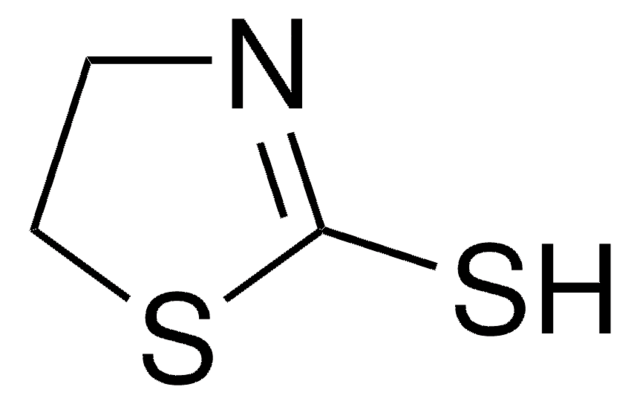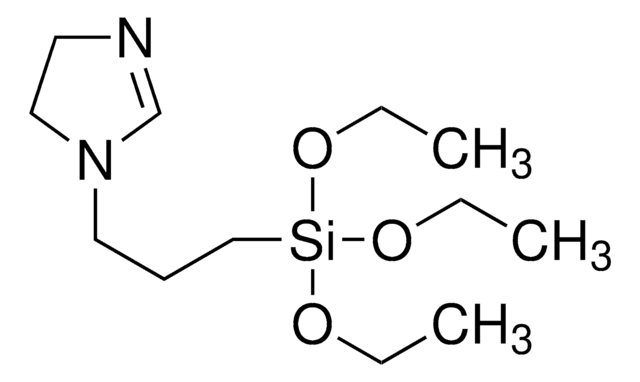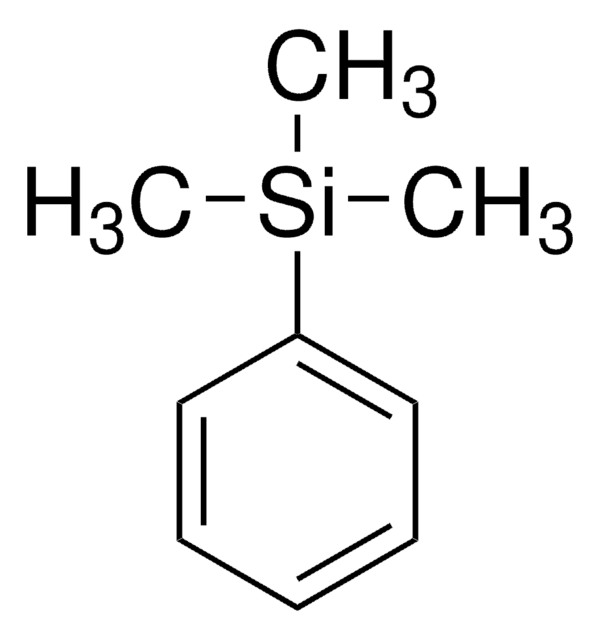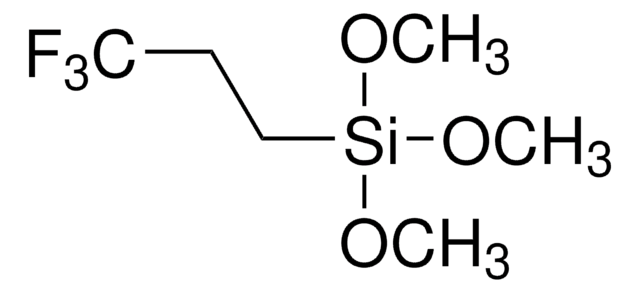638102
4,4′-Bis(triethoxysilyl)-1,1′-biphenyl
≥90% (VPCC)
Synonym(s):
4,4′-Bis(triethoxysilyl)biphenyl
Sign Into View Organizational & Contract Pricing
All Photos(1)
About This Item
Linear Formula:
[-C6H4Si(OC2H5)3]2
CAS Number:
Molecular Weight:
478.73
MDL number:
UNSPSC Code:
12352103
PubChem Substance ID:
NACRES:
NA.22
Recommended Products
Quality Level
Assay
≥90% (VPCC)
bp
203-206 °C/0.3 mmHg (lit.)
density
1.047 g/mL at 25 °C (lit.)
SMILES string
CCO[Si](OCC)(OCC)c1ccc(cc1)-c2ccc(cc2)[Si](OCC)(OCC)OCC
InChI
1S/C24H38O6Si2/c1-7-25-31(26-8-2,27-9-3)23-17-13-21(14-18-23)22-15-19-24(20-16-22)32(28-10-4,29-11-5)30-12-6/h13-20H,7-12H2,1-6H3
InChI key
KENDGHJJHKCUNB-UHFFFAOYSA-N
Application
4,4′-Bis(triethoxysilyl)-1,1′-biphenyl (BTESB) can be used as an indicator to determine the chirality of helical silica nanotubes.
BTESB can also be utilized as a precursor to prepare:
BTESB can also be utilized as a precursor to prepare:
- Helical 4, 4′-biphenylene-silica nanotubes and nanoribbons using 3-aminopropyltrimethoxysilane as a co-structure-directing agent.
- Biphenyl-bridged alkoxysilane-based crosslinked polyalkoxysilane by condensation with linear aliphatic diols.
- Biphenylene-bridged silsesquioxane thin films by the sol-gel method.
A silicon-based nucleophile shown to be reactive in Pd-catalyzed cross-coupling reactions.
Hazard Statements
Hazard Classifications
Aquatic Chronic 4
Storage Class Code
10 - Combustible liquids
WGK
WGK 3
Flash Point(F)
>230.0 °F - closed cup
Flash Point(C)
> 110 °C - closed cup
Personal Protective Equipment
dust mask type N95 (US), Eyeshields, Gloves
Choose from one of the most recent versions:
Already Own This Product?
Find documentation for the products that you have recently purchased in the Document Library.
Customers Also Viewed
A chirality indicator for the walls and the surfaces of silica nanotubes
Hou F-W, et al.
Chinese Chemical Letters = Zhongguo Hua Xue Kuai Bao, 24(8), 770-772 (2013)
Chimie douce route to novel acoustic waveguides based on biphenylene-bridged silsesquioxanes
Masse P, et al.
Journal of Materials Chemistry, 21(38), 14581-14586 (2011)
Lorenzo Abate et al.
Polymers, 11(9) (2019-09-12)
Two series of novel dumbbell-shaped polyhedral oligomeric silsesquioxanes (POSSs), fully functionalized with phenyl groups at the corner of the silicon cages, were used to prepare polystyrene (PS) nanocomposites through the method of in situ polymerization. The percentage of the molecular
Yi Li et al.
Nanotechnology, 22(13), 135605-135605 (2011-02-24)
An anionic gelator, D-C12ValC10COONa, derived from D-valine can cause physical gels in water and organic solvents. Helical 4,4(')-biphenylene-silica nanotubes and nanoribbons were prepared using it with 3-aminopropyltrimethoxysilane as a co-structure-directing agent and 4,4(')-bis(triethoxysilyl)-1,1(')-biphenyl (BTESB) as precursor. It was found that
Denmark, S. E.; Ober, M. H.
Aldrichimica Acta, 36, 75-75 (2003)
Our team of scientists has experience in all areas of research including Life Science, Material Science, Chemical Synthesis, Chromatography, Analytical and many others.
Contact Technical Service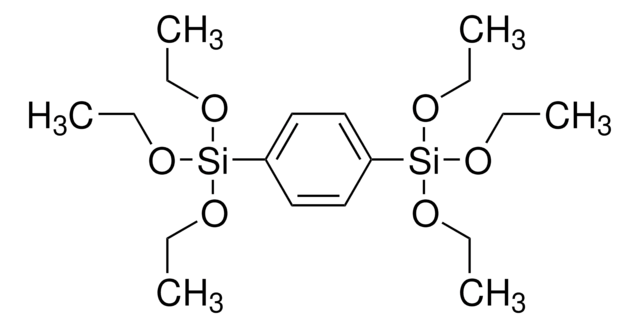


![Bis[3-(triethoxysilyl)propyl] tetrasulfide technical, ≥90% (NMR)](/deepweb/assets/sigmaaldrich/product/structures/242/790/625f5cba-32bd-4acf-a3be-e119e9cf844f/640/625f5cba-32bd-4acf-a3be-e119e9cf844f.png)



